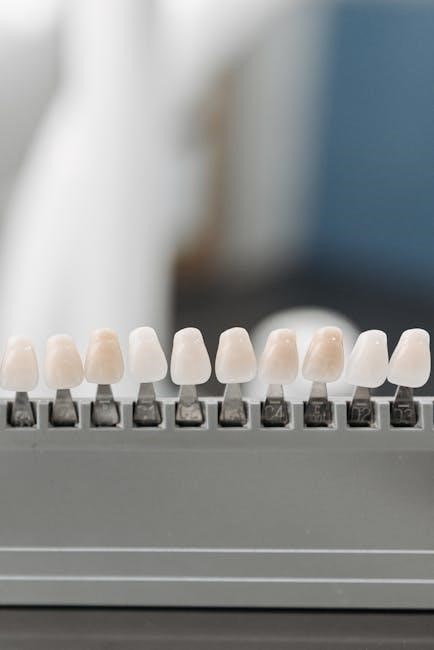
dental abbreviations pdf
Dental abbreviations are shorthand terms used to streamline communication in dentistry, ensuring clarity and efficiency in patient documentation. They cover diagnostic terms, anatomical references, and procedural notes, standardized for consistency across practices. These abbreviations are essential for professionals to maintain precise records and ensure effective treatment planning.
Common Dental Abbreviations
Common dental abbreviations include ADA (American Dental Association), DDS (Doctor of Dental Surgery), and BOP (Bleeding on Probing). These shorthand terms are widely used in patient records, treatment plans, and dental documentation to enhance clarity and efficiency in communication.
2;1 Diagnostic and Anatomical Terms
Dental abbreviations for diagnostic and anatomical terms are crucial for accurate patient documentation. Common examples include AB for abrasion, AT for attrition, and CA for caries. Anatomical terms like M (mesial) and D (distal) denote tooth surfaces. CFL stands for cleft lip, while CFP refers to cleft palate. These shorthand terms help professionals quickly convey complex information, ensuring clarity in treatment planning and record-keeping. For instance, MOM indicates a mesial-occlusal lesion, combining surface abbreviations for precise documentation. Such standardized terms are essential for maintaining consistency and reducing errors in dental practices. By using these abbreviations, dentists and hygienists can efficiently communicate anatomical details and diagnostic findings, facilitating effective patient care. These terms are widely recognized and approved by professional organizations, making them a cornerstone of dental communication and documentation. Their use ensures that all team members understand the patient’s condition and treatment needs without ambiguity.
2.2 Procedural and Treatment Terms
Dental abbreviations for procedural and treatment terms streamline communication among dental professionals. Common examples include DDS/DMD for Doctor of Dental Surgery or Doctor of Medicine in Dentistry, and DSC for Dental Sick Call. Procedural terms like Endo for endodontic therapy and Ext for extraction are frequently used. BOP stands for bleeding on probing, while BU refers to a build-up procedure. These abbreviations are essential for documenting treatments efficiently and ensuring clarity in patient records. For instance, OS denotes oral surgery, and OSS specifies osseous surgery. Such terms are standardized to avoid confusion and ensure consistency across practices. They are particularly useful in charting and billing, where concise yet precise documentation is critical. By using these abbreviations, dental teams can quickly convey treatment details, enhancing workflow and patient care. These terms are widely recognized and approved, making them indispensable in modern dental practice for effective communication and record-keeping.

Importance of Standardization

Standardization in dental abbreviations ensures uniformity, clarity, and consistency across practices. Approved by organizations like ADA and AMA, these guidelines prevent errors, enhance communication, and maintain legal compliance, ensuring accurate documentation and reliable patient care.
3.1 Approved Lists by Professional Organizations
Professional organizations like the American Dental Association (ADA) and the American Medical Association (AMA) play a crucial role in standardizing dental abbreviations. These organizations publish approved lists to ensure consistency and clarity in documentation. The ADA, for instance, provides comprehensive guidelines that include commonly used abbreviations for diagnostic terms, anatomical references, and procedural notes. Similarly, the AMA offers standardized abbreviations that align with medical practices, ensuring seamless communication between dental and medical professionals. These approved lists are regularly updated to reflect advancements in dentistry and changes in clinical practices. By adhering to these guidelines, dental professionals can maintain accurate and uniform records, which are essential for effective patient care and legal compliance. The use of standardized abbreviations also helps in reducing errors and improving the overall quality of documentation, making it easier for professionals to understand and act upon patient information efficiently.
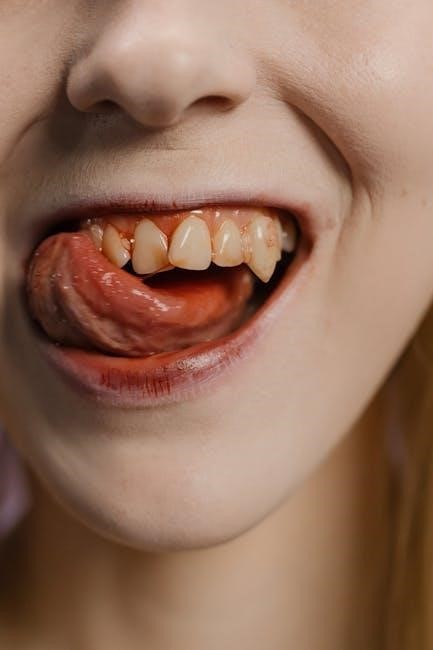
Resources for Dental Abbreviations
Several resources are available to help dental professionals understand and use standardized abbreviations effectively. One of the most common resources is the dental abbreviations PDF, which provides a comprehensive list of approved terms and their meanings. These PDF guides are often published by professional organizations, such as the American Dental Association (ADA), to ensure consistency in documentation. Additionally, many dental schools and training programs include abbreviation lists in their study materials to help students master shorthand terminology early in their careers.
Online databases and professional journals also serve as valuable resources, offering updated lists of abbreviations aligned with current dental practices. For example, the Premera Dental Reference Manual includes a detailed section on acronyms and abbreviations commonly used in patient charts. These resources are regularly reviewed and updated by experts to reflect advancements in dentistry and changes in clinical terminology.
Furthermore, specialized publications, such as the Vestnik of the Mari State University, have published studies on dental abbreviations, providing insights into their diagnostic and anatomical applications. These resources are indispensable for professionals seeking to maintain accurate and efficient communication in their daily practice.
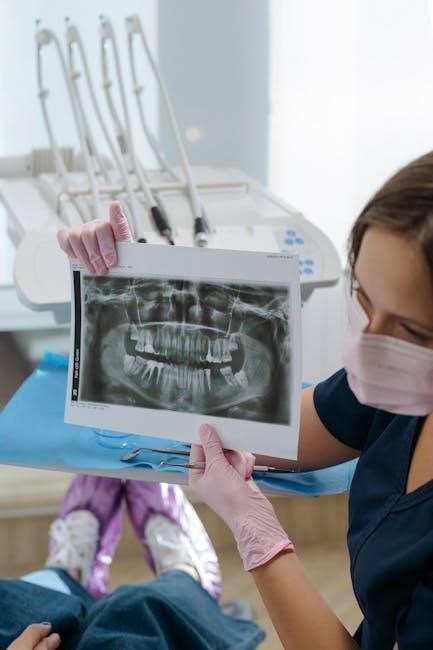
Using the Dental Abbreviations PDF
The dental abbreviations PDF serves as a quick reference guide, offering an alphabetical list of approved terms. It is designed to enhance efficiency in documentation, ensuring clarity and consistency in dental communication. Professionals rely on it for accurate and standardized shorthand.
5.1 Navigating the Guide
Navigating the dental abbreviations PDF is straightforward, with a clear structure designed for ease of use. The guide typically begins with a table of contents, allowing users to quickly locate specific sections. Commonly, abbreviations are organized alphabetically, making it simple to find definitions and usages. Each entry often includes the abbreviation, its full form, and a brief explanation of its application in dental practice. For example, entries like “BOP” for “Bleeding on Probing” or “BW” for “Bitewing” are clearly defined. Some guides also include sections dedicated to anatomical terms and procedural codes, further enhancing their utility. Additionally, cross-referencing is often used to link related terms, ensuring comprehensive understanding. The guide may also include appendices with additional resources, such as charts for tooth surfaces or lists of commonly used dental materials. Overall, the PDF is structured to be user-friendly, enabling dental professionals to quickly access the information they need during patient care or documentation.
5.2 Alphabetical Organization
The dental abbreviations PDF is organized alphabetically, making it easy to locate specific terms quickly. Each abbreviation is listed in order, from “A” to “Z,” with clear definitions and contextual usage. For instance, under “A,” you might find terms like “AB” for “abrasion” or “ADA” for “American Dental Association.” This structure ensures consistency and simplifies the search process. The alphabetical arrangement is particularly useful for professionals who need to reference abbreviations during patient care or documentation. Many guides also include cross-references or hyperlinks within the PDF, allowing users to jump to related terms effortlessly. This feature enhances navigation and saves time. Additionally, the alphabetical format helps in memorizing abbreviations, as they follow a logical sequence. The guide may also include symbols or icons to differentiate between similar terms, further improving usability. Overall, the alphabetical organization of the dental abbreviations PDF is a practical tool designed to meet the needs of dental professionals efficiently.
Tips for Learning Dental Shorthand
Mastering dental shorthand requires consistent practice and a systematic approach. Start by familiarizing yourself with the most common abbreviations used in daily practice, such as “AB” for abrasion or “BOP” for bleeding on probing. Use flashcards or create a cheat sheet to review regularly. Practice writing and deciphering abbreviations in context to improve retention.
- Begin with foundational terms and gradually incorporate more complex abbreviations.
- Engage in interactive exercises or quizzes to test your knowledge.
- Review case studies or patient charts to see abbreviations in real-world scenarios.
- Leverage online resources, such as the dental abbreviations PDF, for guided learning.
- Collaborate with peers or mentors to discuss challenging terms.
- Set aside dedicated time each day for focused study;
- Use mnemonic devices to remember tricky abbreviations.
- Apply your knowledge by documenting mock patient cases.
Consistency is key. By dedicating time each day and reinforcing learning through practical application, you can efficiently master dental shorthand and enhance your professional communication skills.
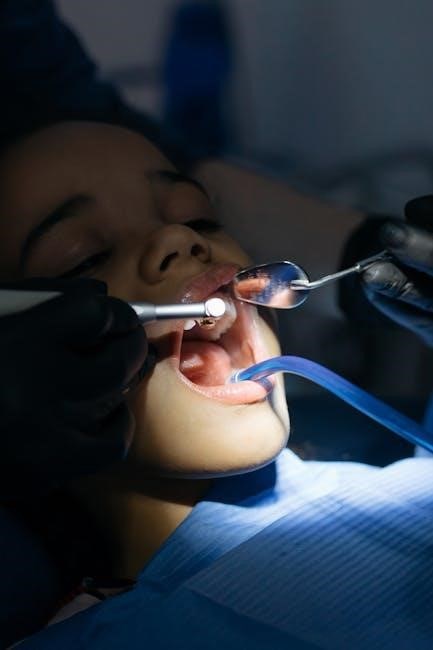
Impact on Communication
Dental abbreviations play a pivotal role in enhancing communication within the dental profession. They provide a standardized language, ensuring clarity and precision in patient documentation, treatment plans, and inter-professional discussions. By using universally recognized terms, dental teams can avoid misunderstandings and streamline workflows.
Consistent use of abbreviations fosters efficiency, particularly in high-pressure environments like clinics or surgical settings. For example, terms like “BOP” (bleeding on probing) or “FW” (full mouth) convey complex ideas succinctly, saving time and reducing errors. This clarity is especially critical for ensuring patient safety and accurate record-keeping.
- Enhances readability and comprehension of dental records.
- Facilitates quick communication during emergencies or procedures.
- Supports consistency in insurance claims and billing processes.
- Ensures uniformity in educational materials and research.
However, improper or non-standardized use of abbreviations can lead to confusion. Therefore, adhering to approved lists, such as those provided in the dental abbreviations PDF, is essential. By maintaining a standardized approach, dental professionals can ensure clear, effective communication across all aspects of patient care.
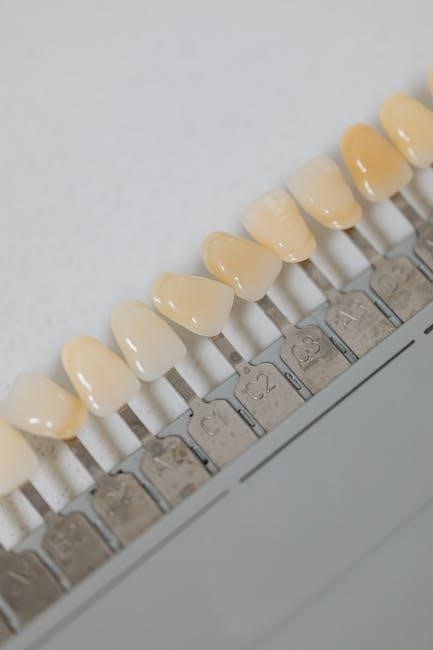
Examples of Abbreviations in Use
Dental abbreviations are frequently encountered in patient records, treatment plans, and clinical documentation. For instance, “DDS/DMD” stands for Doctor of Dental Surgery or Doctor of Medicine in Dentistry, while “Endo” refers to endodontic therapy. Other common examples include “BOP” for bleeding on probing and “BW” for bitewing radiographs.
- “Amox” is commonly used to denote amoxicillin, a frequently prescribed antibiotic in dental procedures.
- “TR” stands for tooth loss due to periodontal disease, often categorized into stages like TR 1 (mild) or TR 2 (moderate).
- “CA” refers to caries, indicating tooth decay, while “CFL” stands for cleft lip and “CFP” for cleft palate.
- “MOD” is used to describe a mesial-occlusal-distal cavity, often seen in restorative dentistry.